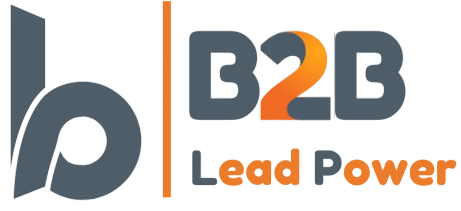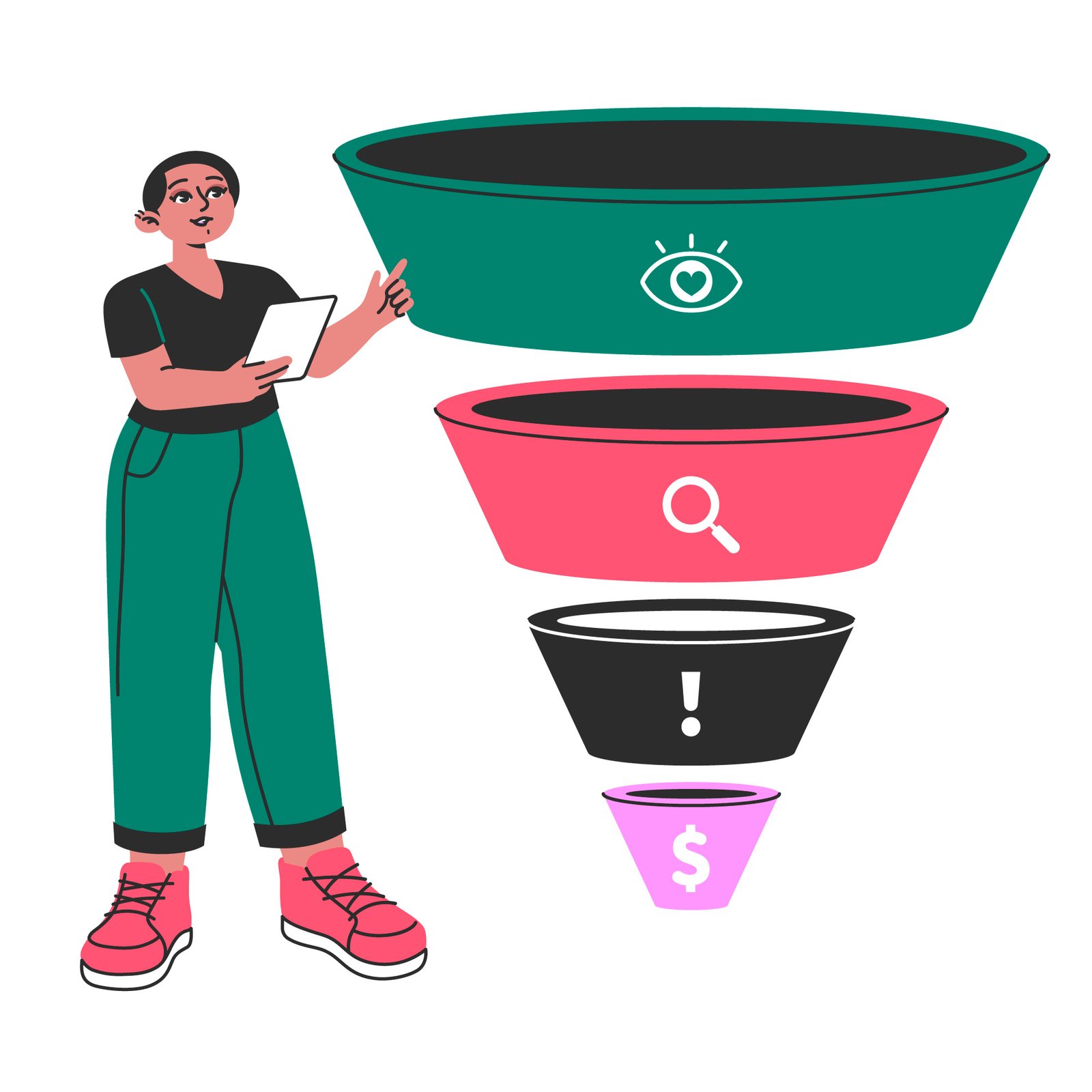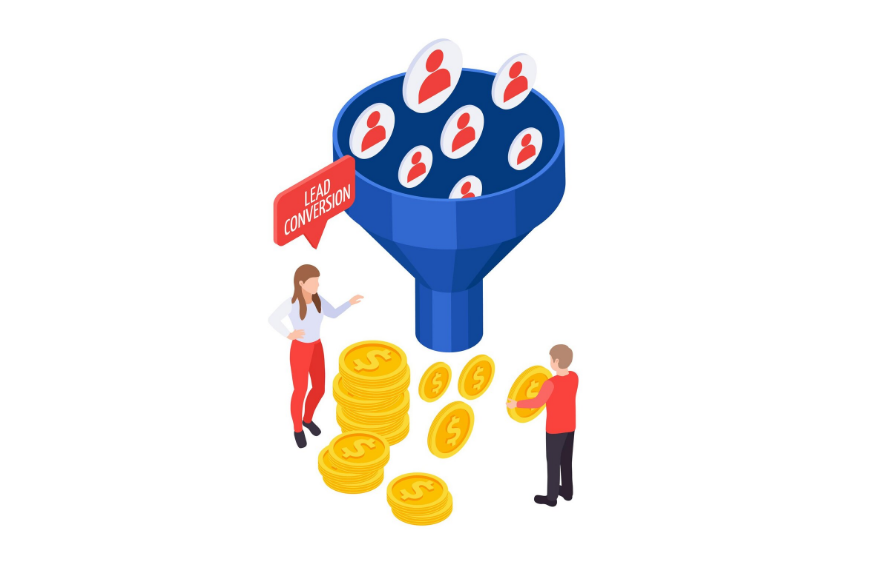Table of Contents
- What Are Behavioral Triggers?
- Why Behavioral Triggers Matter in the Mid-Funnel
- 1. Repeated Website Visits
- 2. Time Spent on High-Intent Pages
- 3. Downloading Middle-Funnel Content
- 4. Email Engagement (Opens and Clicks)
- 5. Demo Requests or Webinar Registrations
- 6. Social Media Engagement
- 7. Form Abandonment
- 8. Inactivity After Initial Engagement
- How to Set Up Behavioral Trigger Campaigns
- Final Thoughts
In B2B marketing, getting prospects to enter your funnel is only half the battle. The real challenge? Moving them through the middle of the funnel (MoFu)—where interest often stalls, skepticism arises, and decision-makers start weighing their options. To drive conversions at this stage, understanding and leveraging behavioral triggers is key.
Behavioral triggers are specific actions or patterns in prospect behavior that indicate readiness to engage more deeply. When identified and acted upon correctly, they can dramatically increase mid-funnel conversion rates.
In this blog, we’ll explore what behavioral triggers are, why they matter, and how B2B marketers can use them to nurture leads and accelerate sales.
What Are Behavioral Triggers?
Behavioral triggers are cues based on a lead’s interaction with your brand—digital breadcrumbs that signal intent, interest, or readiness to take the next step.
These triggers often show up in:
- Website engagement
- Email interactions
- Content consumption
- Social media behavior
- Product demo usage
Recognizing these signals allows marketers to personalize follow-up actions and deliver content or messaging that aligns with the lead’s current stage and mindset.
Why Behavioral Triggers Matter in the Mid-Funnel
The middle of the funnel is all about evaluation and relationship building. Leads are already aware of your brand but haven’t yet decided to buy. They’re comparing vendors, exploring features, and looking for trust signals.
Behavioral triggers help:
- Identify leads with growing interest
- Time outreach more precisely
- Tailor messaging to their specific concerns
- Build credibility and connection
Let’s break down the most powerful behavioral triggers and how to use them.
1. Repeated Website Visits
A prospect who visits your website multiple times—especially product or pricing pages—is signaling a growing interest. They’re no longer just browsing; they’re evaluating.
How to act:
- Trigger a personalized email offering a case study or product comparison
- Prompt live chat or chatbot assistance on return visits
- Alert sales for timely, relevant follow-up
2. Time Spent on High-Intent Pages
Not all page views are equal. Spending several minutes on a solutions page or scrolling through customer testimonials indicates focused research.
How to act:
- Use marketing automation to deliver additional content (whitepapers, webinars)
- Serve retargeted ads based on viewed content
- Prioritize for lead scoring models
3. Downloading Middle-Funnel Content
When a lead downloads content like a product brochure, industry report, or buying guide, it’s a strong signal they’re seriously considering their options.
How to act:
- Send a follow-up email offering a related case study or use case
- Enroll the lead in a nurturing sequence based on the asset topic
- Notify sales with notes about what content was accessed
4. Email Engagement (Opens and Clicks)
Consistent email opens and high click-through rates show sustained interest. Clicking through to landing pages or blog articles tied to features or pain points reveals intent.
How to act:
- Send more targeted emails tailored to the topic they engaged with
- Invite them to a webinar or product walkthrough
- Use email behavior to segment leads for smarter targeting

5. Demo Requests or Webinar Registrations
These are high-value actions that show the lead is moving closer to a decision. They want a deeper look at the product or expert insights.
How to act:
- Prioritize with fast, personal follow-up from a sales rep
- Prepare tailored materials ahead of the demo or event
- Post-event, share key takeaways and next steps
6. Social Media Engagement
Likes, comments, or shares on thought leadership content or product posts can reveal warm leads. If someone engages with your brand repeatedly, they’re watching closely.
How to act:
- Send a connection request or message via LinkedIn
- Share additional insights or invites to related content
- Add them to remarketing audiences
7. Form Abandonment
Starting but not completing a form—like for a trial or consultation—indicates interest paired with hesitation.
How to act:
- Send a friendly reminder or alternate offer via email
- Retarget with a more enticing CTA (e.g., shorter form, different incentive)
- Use exit-intent popups to capture partial submissions
8. Inactivity After Initial Engagement
Sometimes the trigger is what a prospect doesn’t do. A lead who downloaded an asset but hasn’t returned may need a nudge.
How to act:
- Send a re-engagement email (“Still interested in [topic]?”)
- Offer a new piece of content or insight
- Try a different channel, like LinkedIn or retargeting ads
How to Set Up Behavioral Trigger Campaigns
Step 1: Define Mid-Funnel Goals
What does a mid-funnel conversion mean for you? Booking a demo? Downloading a buying guide? Align your behavioral triggers to these outcomes.
Step 2: Map the Buyer Journey
Understand your buyer’s path from awareness to decision. Identify key behaviors that typically precede conversions.
Step 3: Use Automation Tools
Leverage platforms like HubSpot, Marketo, or ActiveCampaign to:
- Monitor behavior
- Set trigger conditions
- Deliver personalized emails or workflows
Step 4: Create Contextual Content
Prepare content for every trigger:
- Case studies for those who viewed pricing
- Comparison guides for those on competitor pages
- Success stories for those who attended webinars
Step 5: Score and Segment Leads
Use lead scoring to prioritize which triggered behaviors are most valuable. Segment based on level of engagement to fine-tune messaging.
Final Thoughts
Mid-funnel leads are valuable—they’ve shown initial interest and are evaluating their options. With the right behavioral triggers in place, B2B marketers can stop guessing and start responding to real-time signals.
By watching for patterns like repeat visits, content downloads, and email clicks, you can engage more intelligently, build trust, and move leads closer to the bottom of the funnel.
Behavior doesn’t lie. Use it to guide your strategy and turn interest into action.






Leave a Reply